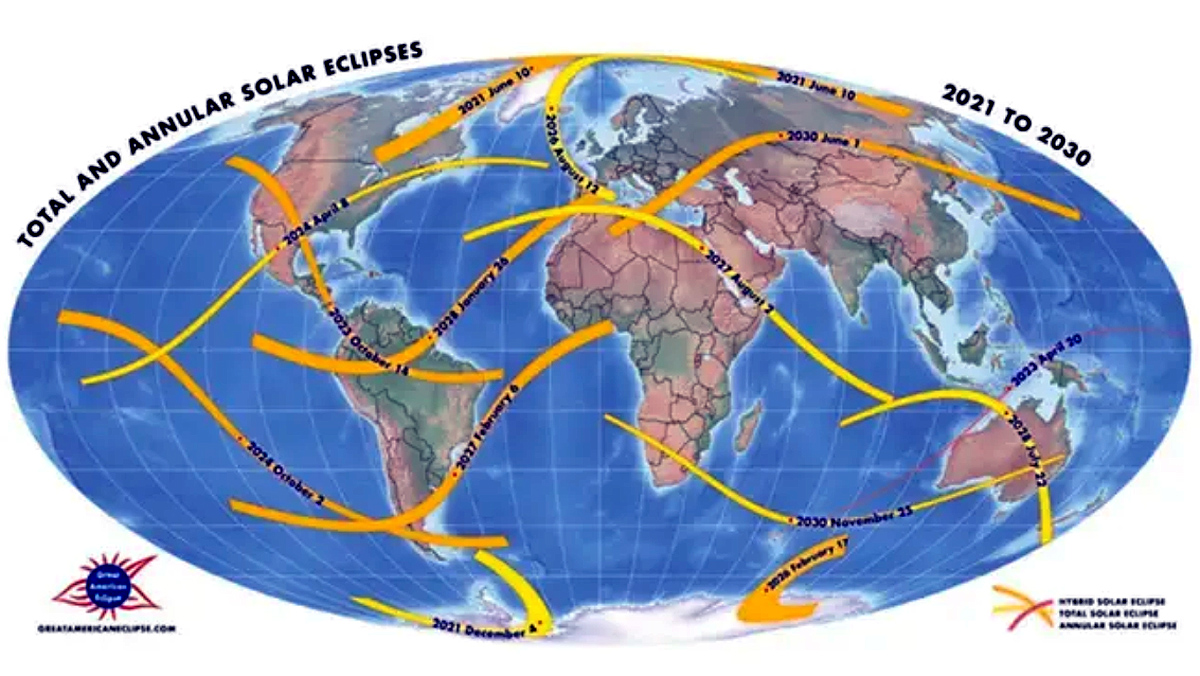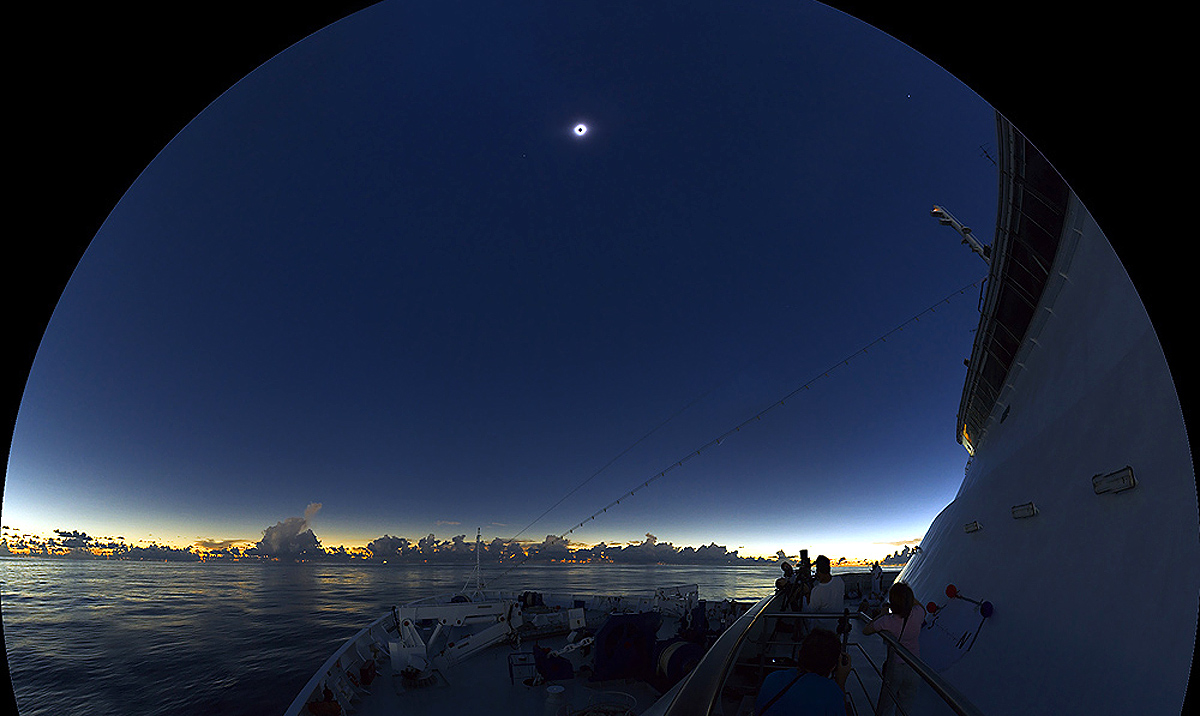In the decade leading up to 2034, we're set to witness seven total solar eclipses (Total Solar Eclipse), a rare astronomical treat. However, out of these celestial events, six won't be visible from India. The one that can be seen will require a decade's wait. This is due to the statistical rarity of a total solar eclipse reoccurring at the same spot, about once every 375 years.
Our planet experiences a solar eclipse approximately every 18 months. Yet, not all are total. In the upcoming decade, Earth will host seven total solar eclipses viewable from various locations across the globe such as Australia, Egypt, Spain, and Sudan, with the moon casting a shadow over these lands. The first one, coming up in two years' time in 2026, will be followed by the seventh in 2034.
Discover more:

Source: aajtak
Let's explore which eclipses will occur and how long they’ll last in each country...
August 12, 2026
The upcoming total solar eclipse will grace the skies of Russia, Greenland, Iceland, and Spain. Lasting 2 minutes and 18 seconds, Europe will witness a complete eclipse after 27 years. Coinciding with this is the Perseid Meteor Shower. The path of totality will sweep over Greenland, western Iceland, and northern Spain. The prime viewing location would be Reykjavik, Iceland's capital, while Spain’s island of Mallorca will experience a sunset totality, revealing a golden corona.
August 2, 2027
This solar showstopper will dazzle viewers in Spain, Gibraltar, Morocco, Algeria, Tunisia, Libya, Egypt, Sudan, Saudi Arabia, Yemen, Somalia, and the British Indian Ocean Territory. Lasting an exceptional 6 minutes and 23 seconds, the best view will be in Luxor, Libya. Jeddah and Mecca in Saudi Arabia will also offer clear visibility. Approximately 89 million people will find themselves under the path of this eclipse.
Learn about: A Hypersonic Challenge; Israeli Iron Dome Faces Advanced Missile Threat

Source: aajtak
July 22, 2028
This eclipse will make its appearance over Christmas Island, Cocos Island, Australia, and New Zealand. Lasting 3 minutes and 48 seconds, the most stunning views are expected in the remote regions of Australia like the Bungle Bungles and Karlamilyi National Park.
November 25, 2030
Visible for 3 minutes and 44 seconds, this eclipse can be viewed from Namibia, Botswana, South Africa, Lesotho, and Australia. Approximately 11 million people will witness this solar phenomenon, with the best experiences from Botswana to Durban. The trail will also pass over New South Wales and Queensland in Australia.
Insight: Arrow-3, Israel's Hypersonic Ascent to Missile Defense Prominence
November 14, 2031
The next decade's first hybrid Total-Annular Solar Eclipse. For the best view, embark on a cruise ship from Hawaii. The 21st century has only seen seven hybrid eclipses so far, where a mix of the 'Ring of Fire' and a total eclipse occurs. A short-lived Ring of Fire will be visible off Panama's coast for merely 25 seconds.

Source: aajtak
March 30, 2033
A total solar eclipse will enchant North America but only for a swift 2 minutes and 37 seconds, particularly over Alaska and Russia. To witness this, one must travel to the Pacific Ocean aboard a cruise ship from the Hawaiian Islands.
March 20, 2034
This solar spectacle will be in full glory over Benin, Nigeria, Cameroon, Chad, Sudan, Egypt, Saudi Arabia, Kuwait, Iran, Afghanistan, Pakistan, India, and China. With a duration of 4 minutes and 9 seconds, nearly 109 million people across 13 countries in Central and South Asia will have the opportunity to observe it. The most extraordinary views are predicted along the Red Sea in Egypt, Persepolis in Iran, and Leh in the Indian Himalayas.




